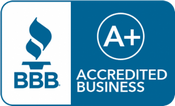
Creating a Cash-Flow Projection: 5 tips to get you started.
Published on July 14, 2016
Cash-flow is the life force of your business. You simply need accessible money to operate -- to pay the rent, utility bills, employee wages, and bills from vendors and suppliers, just to name a few. Without adequate cash-flow, every great idea you have for your business goes up in smoke.
If yours is like most businesses, you’re likely going to experience a lag between selling your goods and services and getting paid. For some businesses, this is more extreme than others (an attorney may not get fully paid until a lengthy case is settled, for example), but all businesses experience a gap between service delivery and payment, and need to cover that gap somehow. How do you make sure there is enough accessible cash in the bank to cover your expenses until you actually get paid? The answer is simple: you create a cash-flow forecast.
Relatively simple to do but oh-so-vital, a cash-flow forecast uses the the information you have available to you to predict the flow of money (in and out) of your business. It shows you your annual profits vs. end-of-year debt. Beyond that, a cash-flow analysis also gives you a clear look at where you are making the most money, what’s costing you the most money, and how to better set up your financial goals for the next year.
Accuracy is key. Here are a few simple tips to help to get you started.
1. Estimate the amount of amount of money that will come in -- and don’t fudge it.
A cash-flow statement must be accurate or it’s completely worthless. Sure, you may be experiencing substantial growth now, but do your records from previous years reflect that growth (or at least consistency) is the same every month? Where is your slow season? What patterns are evident as you look at your sales history? Very likely, those patterns will continue to repeat themselves.
If you are a new business with no previous sales history, looking at industry standards is a great place to start, provided that you look at businesses like yours in very similar climates. In other words, if you happen to start a business in a town with many competitors, and that’s not typical for your industry, you will have to lessen your income projections.
Be realistic when estimating your income and outgoing expenses. This will ensure there’s always a healthy amount of cash on hand and your bills will be paid.
2. Honor the terms of your own contracts.
Unless you are a retailer that gets money at the point of sale, you’re going to have to wait to get paid for your service -- 30, 60, even 90 days from now, depending on the terms of your contract with the client. Therefore, when doing your cash-flow projection, accounting for that time and accurately estimating when you will get paid (not just how much) is crucial. You have to have money on hand even when it isn’t coming in.
3. Sweat the small stuff.
When doing cash-flow projections, we tend to think of big expenses like rent and employee wages, and neglect the small stuff like office supplies and employee lunches. Sure, one missed ink cartridge or delivered pizza isn’t going to make a huge difference to your bottom line, but small expenses, over time, do add up.
Go through your outgoing expenses from previous years very carefully and look at the smaller (and often forgotten) expenses. Do you have professional association dues? An annual convention that requires travel? Don’t let the little things come back to bite you when sales are down.
4. Be an optimist. Then be a pessimist.
At best, a cash-flow projection is just an educated guess. You really cannot be sure what’s going to happen. Think of your best case scenario, like sales increasing 20%. How will you manage that growth? Will you save for a rainy day? Buy new equipment? (Hint: this is the fun part.) Now, think of the worst-case scenario, sales decreasing by 20%. How will you manage the downturn?
5. Revisit often.
A cash-flow forecast is not a dead document once it’s created. Revisit and update it as your actual numbers come in or something changes in your business. For example, if a competitor opens up a mile away or your best sales guy leaves, your projected income just took a dip. Don’t neglect to update that in your cash-flow projection. Staying on top of your estimates is as important as creating them the first time.
Without question, securing your access to cash is the single most important part of making your business run. Make a habit of diligently creating and updating cash-flow projections to ensure the sustainability of your business.






